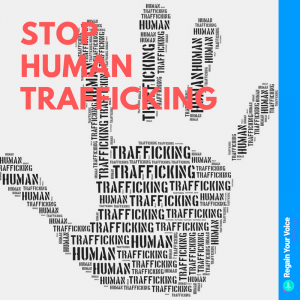As Seen in MetroKids, April/May 2024
Written by Melissa Hague
Athletics often promote discipline, teamwork and personal growth. However, recent incidents have highlighted a darker side: the vulnerability of athletes, especially children, to sexual abuse and harassment by their coaches. The allegations of sexual abuse committed by Larry Nassar, a doctor for USA Gymnastics, led to increased awareness surrounding athletes and sexual abuse and harassment by coaches, assistant coaches, and team physicians. In response to the sexual abuse issue, U.S. Congress authorized the U.S. Center for SafeSport, a nonprofit that addresses abuse in sport.
As an attorney who counsels families of student athletes who experience abuse by coaches, I have seen how young athletes are vulnerable to the power dynamic in youth sports. Coaches hold significant power over their athletes, both on and off the field. Athletes may feel compelled to follow their coach’s demands, even if those demands are inappropriate or abusive.
Athletes spend significant time with coaches, sometimes away from parental supervision. Team travel and overnight trips can be an isolated environment ideal for perpetrators to engage in abusive behavior without detection.
Many athletes, parents, and sports organizations may not recognize the warning signs of sexual abuse and harassment in sports. The U.S. Center for SafeSport provides guidelines for appropriate coach-athlete interactions to help prevent abuse and harassment. Parents should be familiar with these guidelines and discuss them with their children:
One-on-One Interactions: Coaches should avoid being alone with individual athletes in settings where they cannot be observed by other adults. If one-on-one interactions are necessary (e.g., private coaching sessions), they should take place in open and observable environments, with the knowledge and consent of both the athlete and their parent or guardian.
Physical Contact: Coaches should limit physical contact to what is necessary for coaching or training purposes. Contact should always be age and developmentally appropriate and conducted in a respectful and non-threatening manner.
Electronic Communication: Coaches should use appropriate language when communicating with athletes via electronic means, such as text messages, emails, or social media. Personal or private communication with athletes should be transparent and conducted with the knowledge and consent of parents or guardians.
Social Media: Coaches should maintain professional boundaries on social media platforms and avoid engaging in personal or inappropriate communication with athletes. They should use official team or organization accounts for communication related to coaching or team matters.
Travel and Overnight Accommodations: Coaches should adhere to strict guidelines when traveling with athletes, especially overnight. They should avoid sharing hotel rooms with individual athletes and arrange appropriate supervision and chaperones.
Steps to Protect Your Child Athlete:
- Open Communication: Encourage your child to communicate openly about their experiences with their coach. Maintain regular conversations about their interactions with coaches during practices and games. Create a safe space for them to express any concerns or discomfort.
- Establish Boundaries: Set clear boundaries regarding appropriate coach-athlete interactions according to professional codes of conduct. Avoid situations where one-on-one interactions occur behind closed doors.
- Recognize Red Flags: Educate yourself and your child about the warning signs of grooming behavior and sexual abuse. Be vigilant for any unusual behavior from coaches: excessive attention, inappropriate comments, or attempts to isolate the athlete.
- Report Suspected Abuse: If you suspect your child is being abused or harassed by their coach, take immediate action. Report your concerns to the appropriate authorities, such as law enforcement or child protection services. Seek support from trusted professionals, such as counselors or victim advocates.
Participation in sports is a healthy part of child development that teaches responsibility, time management, and team participation. Understanding the factors that contribute to athletes’ vulnerabilities and knowing the steps to take to protect your child from sexual abuse and harassment will help in developing effective prevention strategies and avoid bringing a case with an attorney.



